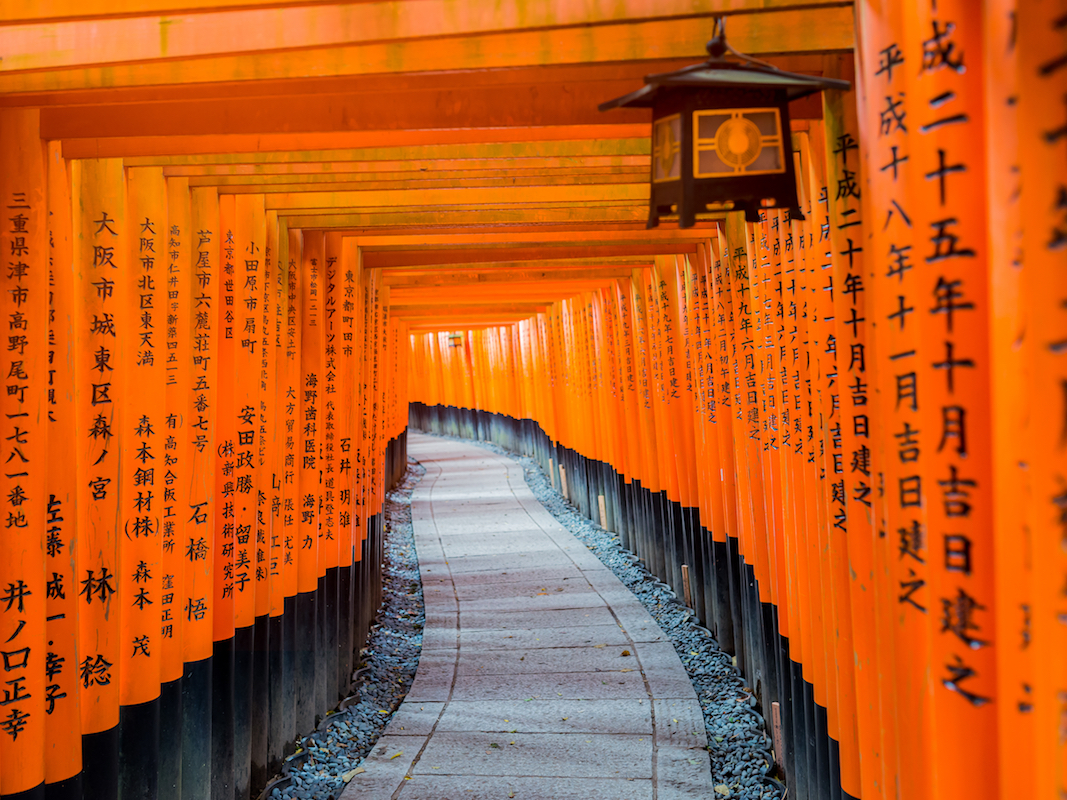- Travel + Leisure named Japan its 2018 destination of the year.
- The magazine selects each year’s choices among a jury of writers, editors, and relevant experts.
- Towering mountains, beautiful cherry blossoms, and neon-flooded streets make Japan a remarkable place.
- Some of the best things to do include taking the bullet train from Tokyo to Kyoto to see Mount Fuji on the way and walking the Fushimi Inari-taisha shrine for an unparalleled view of Kyoto.
- You can also take a dip in the natural hot springs at Nishiyama Onsen Keiunkan, which is widely considered the world’s oldest hotel.
Tokyo may be an impressive city, but that’s not all Japan has to offer.
The country’s islands, shrines, world-renowned cuisine, and beautiful scenery are just a few reasons why it’s a great place to travel. So it should come as no surprise that Travel + Leisure named Japan its 2018 destination of the year.
From the bustling streets of Shibuya, Tokyo, to the majestic Mount Fuji, here are some things to see and do in Japan that will make you want to visit immediately.
Ride a bullet train from Tokyo to Kyoto and see Mount Fuji along the way.
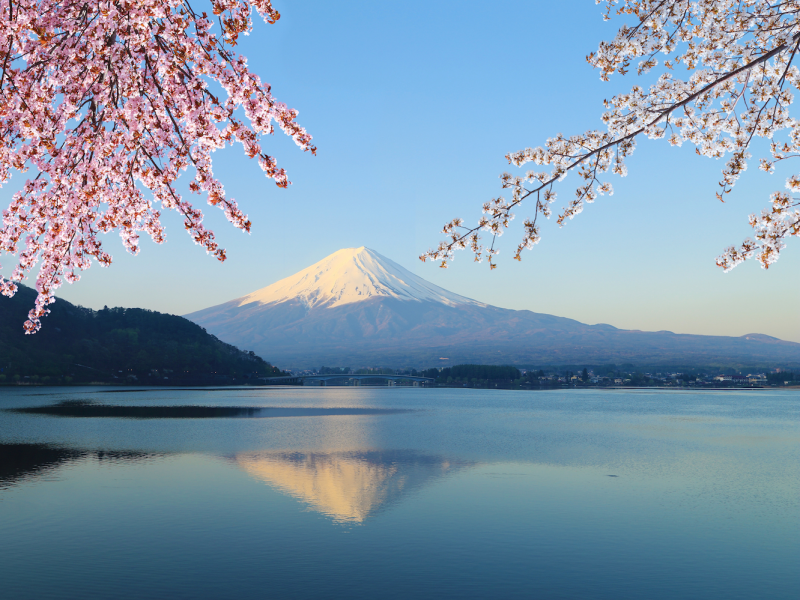
Traveling across Japan isn’t a terribly difficult undertaking thanks to its Shinkansen bullet train network. With trains that travel at speeds of up to almost 200 miles per hour, passengers riding south from Tokyo to cities like Kyoto and Osaka can take the window seat and enjoy a beautiful view of Mount Fuji, a dormant volcano and Japan’s highest mountain.
Visit a cherry blossom festival in the spring.
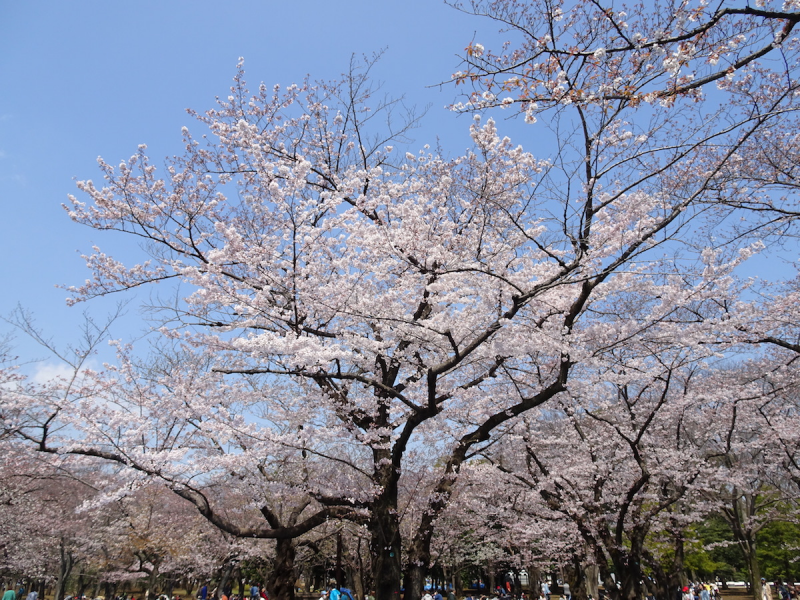
The cherry blossom, or sakura in Japanese, is a revered flower in Japan. Considered a symbol of life and its vulnerability, many Japanese families congregate to practice hanami, or the tradition of publicly watching and celebrating cherry blossoms when they bloom in the spring.
While there are plenty of festivals devoted to the flower in Japan, the southern city of Matsuyama is most famous for its historic cherry blossom-themed spring festival where the flowers bloom amid Matsuyama Castle each year.
Visit an island where cats outnumber people.

Tashirojima earned its nickname as "Cat Island" for good reason. While the island is home to around 100 humans, they are heavily outnumbered by their feline friends. Initially brought to the island for pest control, the cats are now taken care of by the island's residents, largely due to the good luck cats are said to symbolize in Japan.
Kyoto's bamboo forest is a tranquil place to visit.
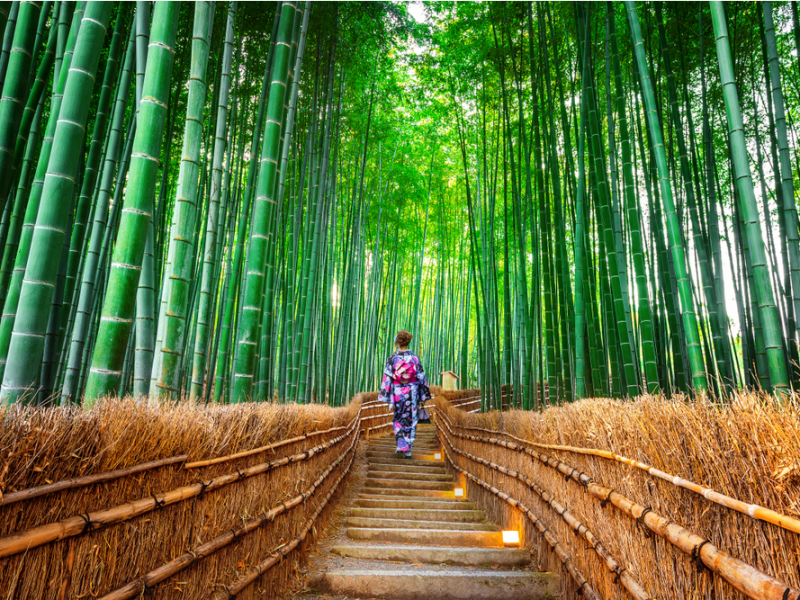
Kyoto is well known for carefully maintaining its many historical temples, shrines, and gardens, and the Sagano Bamboo Forest is no exception.
Located on the outskirts of the city, the forest is often touted for its second-to-none scenery and beautiful soundscapes. The forest also contains manicured gardens and is a short walk away from Kyoto's Tenryu-ji Temple.
Pay your respects at Kamakura's Great Buddha.
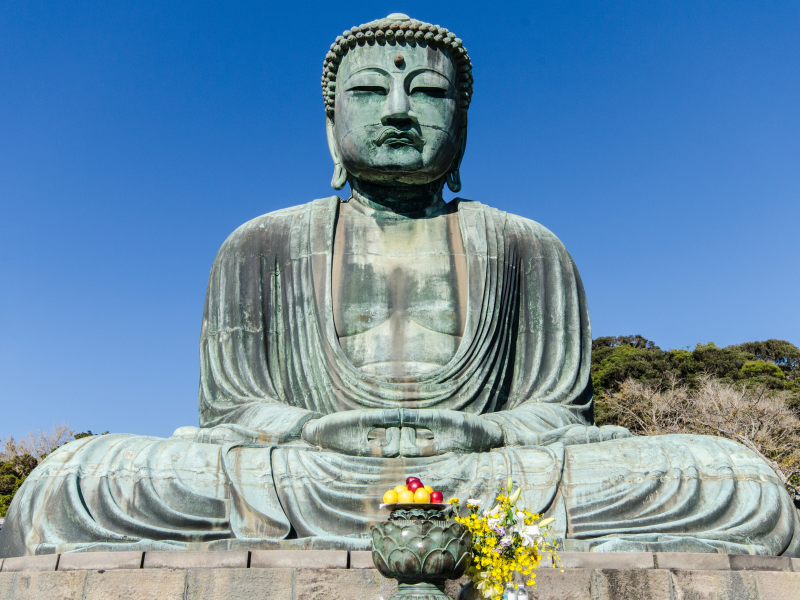
In the city of Kamakura there's a centuries-old bronze statue dedicated to the Amida Buddha. The monument weighs around 121 tons, and was originally gold-plated; according to Atlas Obscura, some traces of gold can still be seen around its ears today.
Walk the path of Kyoto's Fushimi Inari-taisha.
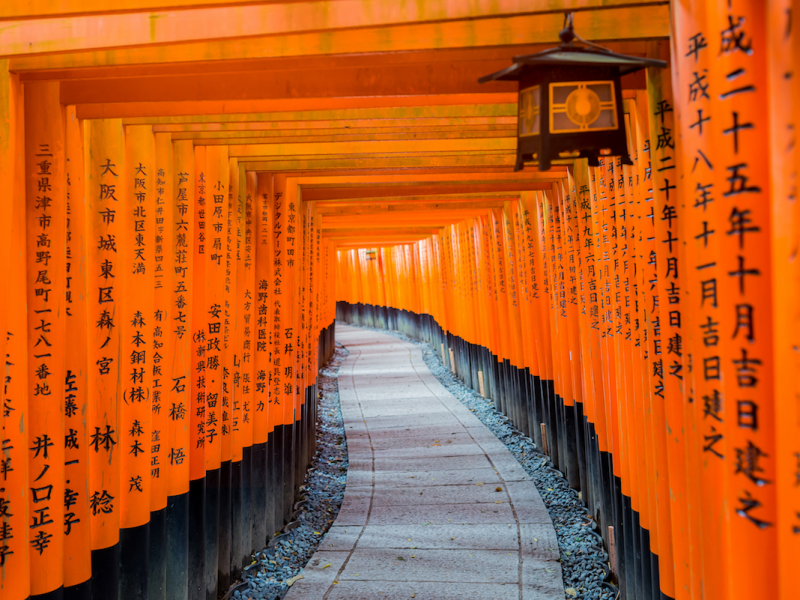
Fushimi Inari-taisha is one of Japan's most well-known and photographed shrines. Dedicated to the Shinto god of rice, the shrine's path is a strenuous hike; visitors have to pass over 5,000 of its signature orange gates along the way. But with centuries-old monuments and statues, along with an unparalleled view of Kyoto, it's worth the walk.
Lose yourself in the forest that inspired "Princess Mononoke."
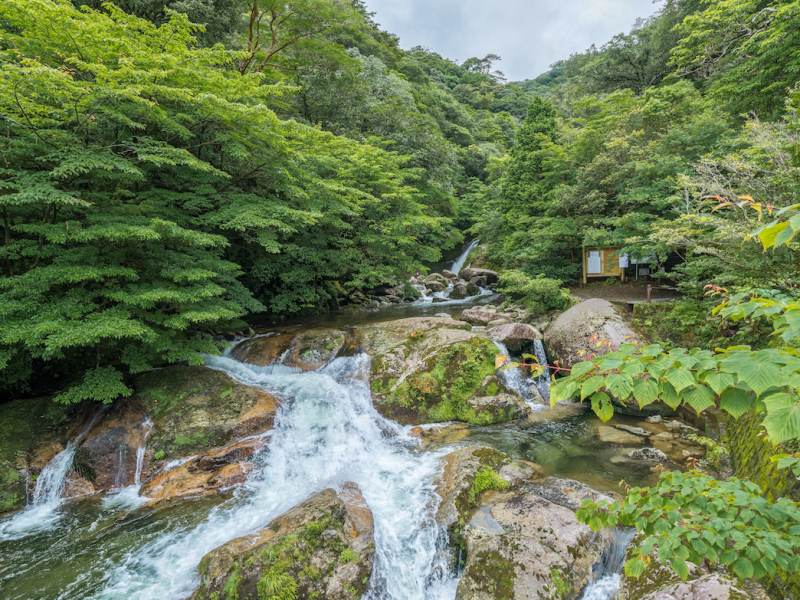
The island of Yakushima is littered with forests and ravines, some of which contain trees that are over 1,000 years old. One of the most notable is the Shiratani Unsuikyo Ravine, a nature park with nearly-untouched creeks and cedar trees, along with accessible footpaths for easy hiking. The park was iconic enough to serve as visual inspiration for one of Japanese director Hayao Miyazaki's most famous films, "Princess Mononoke."
Look at modern art or shop your heart out at Roppongi Hills.
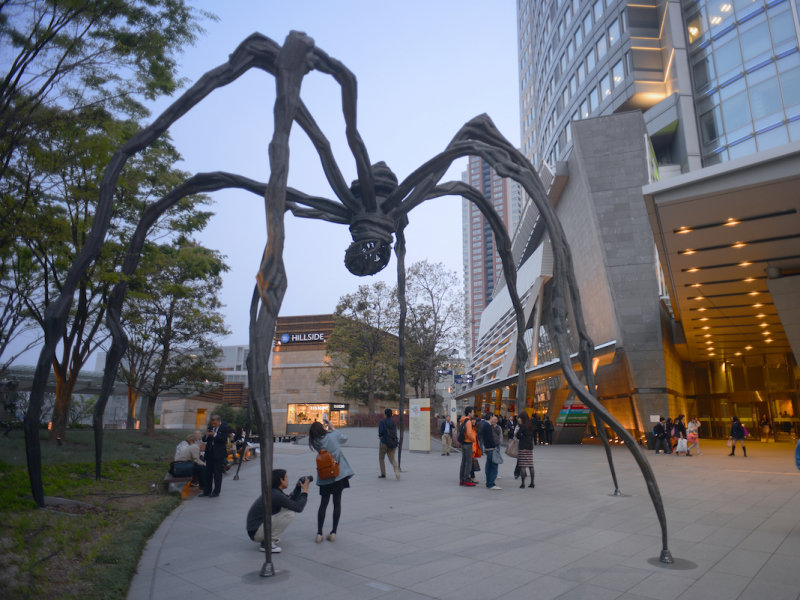
Developed in 2003, Roppongi Hills is a residential and cultural project that was built to revitalize Tokyo's Roppongi neighborhood. Today, it features multiple contemporary art museums and galleries, a vast shopping and restaurant district, an observation deck of the Tokyo skyline, and a small garden touted for its beautiful greenery and cherry blossom trees.
Walk down the bustling Takeshita Street in Tokyo's Harajuku neighborhood.
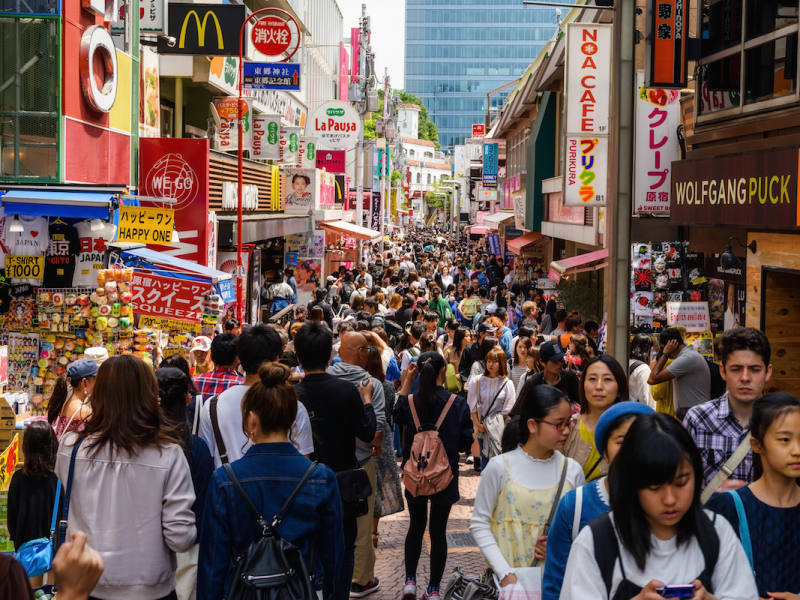
Located in the heart of the Tokyo neighborhood of Harajuku, Takeshita Street is a busy shopping district lined with eclectic boutiques, cafés, and shops. Known to be a center for style and fashion, the area is especially popular with young people on the weekends.
Nearby Takeshita Street, spend hours in awe of the Meiji Shrine.
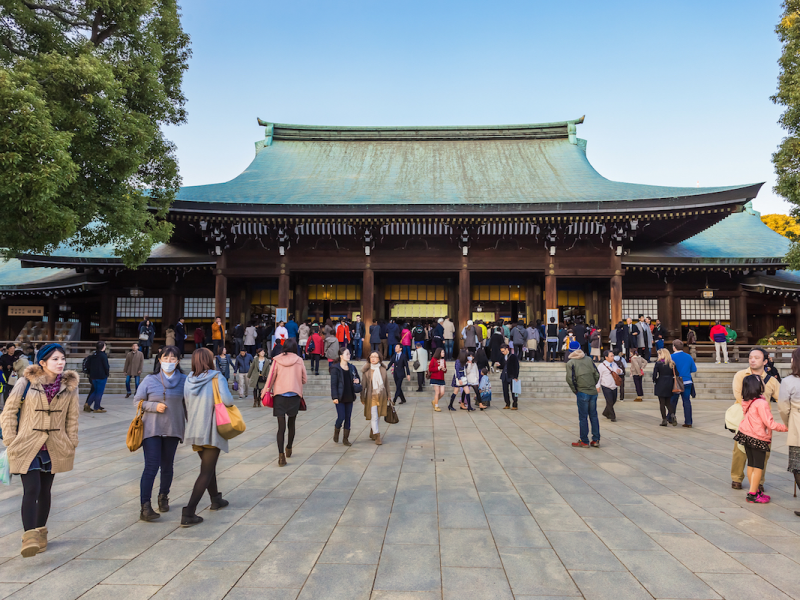
Built in 1920, the 178-acre Meiji Shrine is a dedication to the late Emperor Meiji.
The shrine's walking paths, gardens, and monuments to the Shinto faith (such as Torii and Noh Theater stages), in addition to the 100,000+ trees within its forest, make it a great place to spend a day.
Visit Tōdai-ji, or the Great Buddha Hall — once the largest wooden building in the world — in Nara.
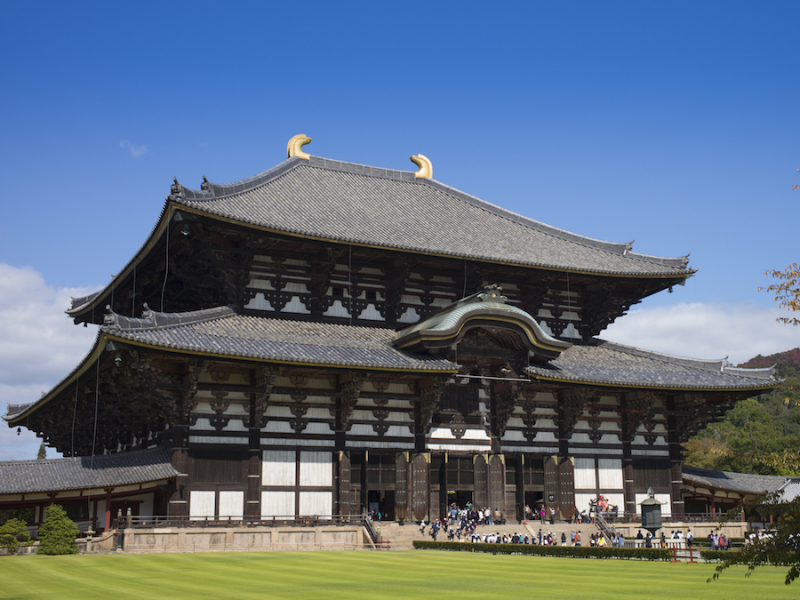
A former capital of Japan, Nara became home to many significant Buddhist and Shinto monuments. Among them, Tōdai-ji (or the Great Buddha Hall) is one of the most notable.
Constructed in 752 AD, it was once the largest wooden building in the world and contains a 500-ton statue of the Buddha. When you go, you might also spot some deer; a population of tame deer from the neighboring Nara National Park regularly wander the temple grounds, making it a peaceful destination to visit.
Get a concentrated taste of Japanese pop culture in Akihabara, Tokyo.
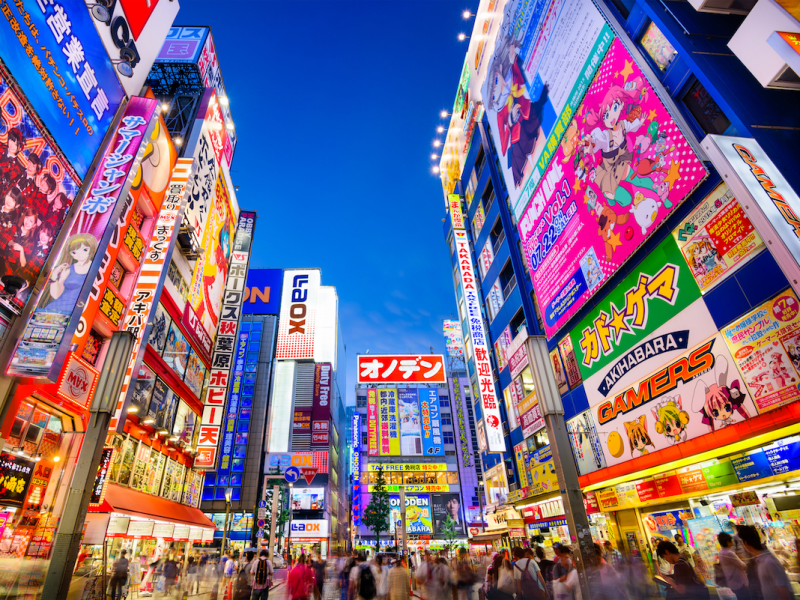
Once a market popular with Tokyo's seedy merchants, Akihabara has now become one of Tokyo's most eclectic neighborhoods.
You'll find stores catering to the signature aspects of Japanese pop culture - manga, video games, and toys - along with multistory shopping complexes dedicated to electronics. The neighborhood's excessive neon signage and eccentric shops make it a must-see when in Tokyo.
Fulfill your inner child at the Ghibli Museum.
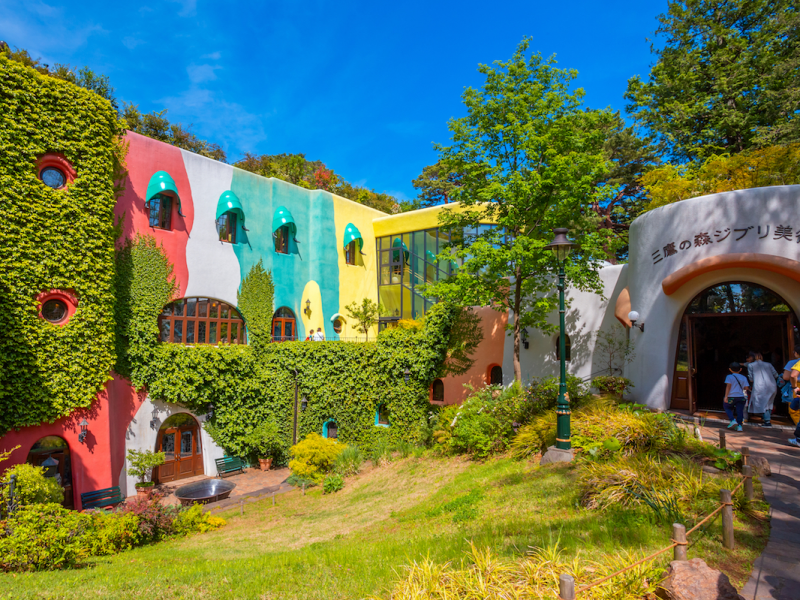
Fans of Studio Ghibli - the film studio behind iconic animated films such as "Spirited Away," "My Neighbor Totoro," and "Princess Mononoke" - will find themselves at home at its namesake museum.
Located in the suburbs of Tokyo, it's both a museum that showcases the studio's vast body of work and an interactive playground built on the themes of its films. Children and adults alike can immerse themselves in the museum's exhibits, large park, and studio-themed cafe.
Take a dip in this 1,300-year-old hotel's natural hot springs.
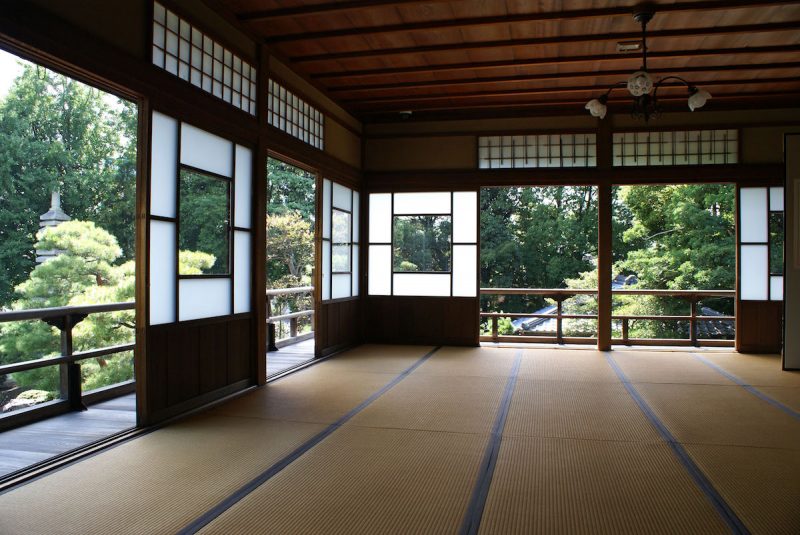
Onsen, or natural hot springs, are scattered across Japan's countryside, and are considered a part of local culture.
Nishiyama Onsen Keiunkan - widely considered the world's oldest inn - located in the Yamanashi Prefecture has operated its hot springs for over 1,300 years and has served esteemed patrons such as Japanese samurai and members of the shogunate, Japan's former military ruling class.
Beautiful scenery, notable museums, and spa days are all the norm in the mountain town of Hakone.
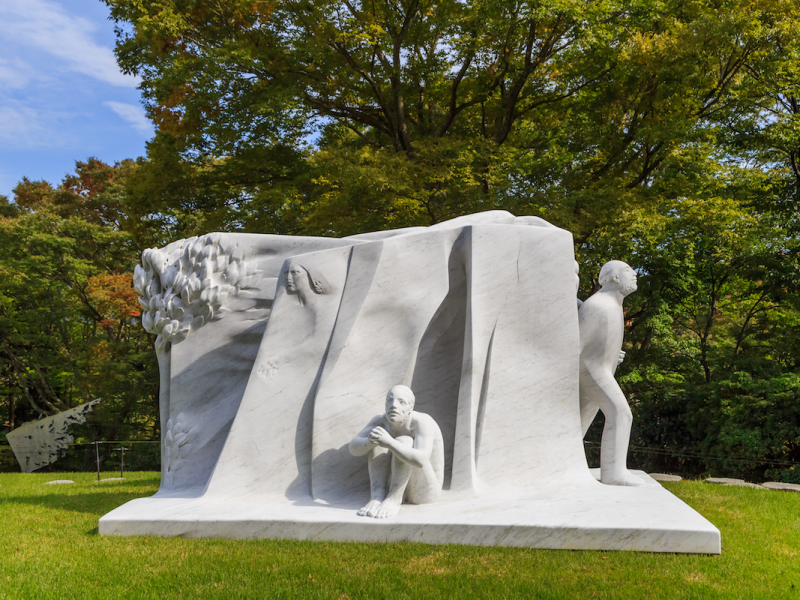
Hakone is approximately a two-hour train ride outside of Tokyo and is known for its beautiful view of Mount Fuji, its hot springs, and a myriad of historical and contemporary art. Home to the Hakone Open-Air Museum, the museum covers 750,000 square feet and is one of the city's most notable tourist attractions, featuring works from Picasso and Renoir, in addition to outdoor grounds that host a variety of contemporary sculptures.
Visit INSIDER's homepage for more.

